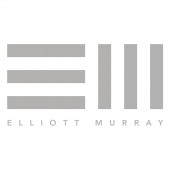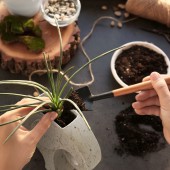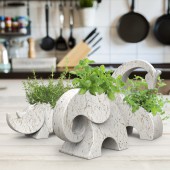DESIGN NAME:
Samsara
PRIMARY FUNCTION:
Planter
INSPIRATION:
From the beginning, the purpose of Samsara was to get people talking, especially about the origins of its material. This begins a discussion on the wildlife helping to make Samsara and the issues they face. When the issues facing wildlife are mentioned even once, an impact is made. This unobtrusive approach makes individuals more willing to participate and be inspired. Awareness of an issue is the first step towards action, and further on towards a solution.
UNIQUE PROPERTIES / PROJECT DESCRIPTION:
The Hindu cycle of life, Samsara envelopes a notion of endless reincarnation. Using meaningless materials, such as poop from large herbivores, to form timeless objects, Samsara bridges the gap from passive products to meaningful discussions. Subtle awareness is brought to the table when users and observers engage in the story that is Samsara.
OPERATION / FLOW / INTERACTION:
Samsara is ready to be planted right out of the box. It is recommended for use with succulents or herbs, as they will stop growing when the plant has reached max capacity. If the user grows tired of Samsara, of if the planter begins to wear out, the user can simply plant Samsara directly into the ground or place it in a compost pile due to it using only natural materials and processes. In addition to receiving Samsara the user will also receive an information card with the story and facts that make up Samsara to help the user pass on it's story to others.
PROJECT DURATION AND LOCATION:
Creating the concept for Samsara began in September 2016 in Ft. Lauderdale, FL and was visualized by February 2017.
FITS BEST INTO CATEGORY:
Social Design
|
PRODUCTION / REALIZATION TECHNOLOGY:
Feces are first gathered from large herbivores, due to its large, intact, plant fibers. These feces are boiled and dried to separate out debris. This also kills any bacteria, removing the smell. The fibers, with mushroom mycelium, are packed into a mold, and allowed to grow. As the mixture fills the mold, it is removed, fired, and dipped into beeswax. It can now be used to grow plants. Due to using only natural materials, it can be made by locals living near and around wildlife.
SPECIFICATIONS / TECHNICAL PROPERTIES:
Elephant: Width 74mm x Depth 140mm x Height 110mm
Giraffe: Width 74mm x Depth 125mm x Height 182mm
Rhino: Width 74mm x Depth 162mm x Height 90mm
TAGS:
Green, planter, poop, elephant, plants, samsara, elliott, murray, sustainable, eco
RESEARCH ABSTRACT:
With abnormal materials like poo, you have to understand what it's made of. I first researched which feces are best due to multiple criteria. I decided on large herbivore waste due to make up, amount, and for containing less communicable diseases. When creating the manufacturing process I researched how elephant poo paper is currently made, since a lot of the processes are similar. Also I read a lot of research by artist Danielle Trofe and her use of mushroom mycelium as a material.
CHALLENGE:
The biggest challenges were not the material but the form of Samsara. For one, the manufacturing process called for a very simple mold, especially if Samsara is to be manufactured locally. This resulted in that Samsara can be manufactured using only two part molds containing one insert. Secondly, to stay true to a Fibonacci form and proportion, took a lot of tweaking to get it just right. Samsara went through multiple iterations, both physically and digitally, to become what it is today.
ADDED DATE:
2017-03-30 02:18:43
TEAM MEMBERS (1) :
IMAGE CREDITS:
Elliott Murray, 2016.
|










